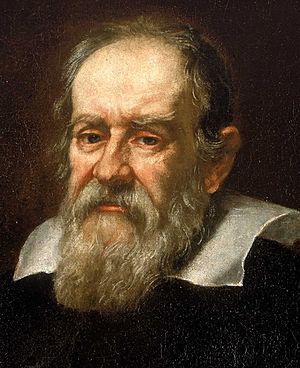Inertia facts for kids
Inertia is a basic idea in physics. It means that an object will keep doing what it's already doing. If it's still, it will stay still. If it's moving, it will keep moving in a straight line at the same speed. This will happen unless a force pushes or pulls it to change its motion.
This idea is also called the "principle of inertia." Isaac Newton described it in his first law of motion. He said:
LAW I. Every object perseveres in its state of rest, or of uniform motion in a right line, unless it is compelled to change that state by forces impressed thereon.
The word "inertia" comes from a Latin word, iners. It means "idle" or "sluggish." So, inertia is like an object's natural laziness to change its movement. It shows how much an object resists changes to its velocity (its speed or direction). This property is a main way we see mass in action. Mass is a measure of how much "stuff" an object has.
Contents
Understanding Inertia
Inertia is a very important idea in classical physics. We still use it today to understand how objects move. It also helps us see how forces affect them.
Early Ideas About Motion
For a long time, people believed what Aristotle said about motion. He was a philosopher from ancient Greece. Aristotle thought that objects on Earth would only move if a force kept pushing them. He believed they would stop moving if the force was removed. This made sense because things like gravity, friction, and air resistance always slow objects down.
But some thinkers disagreed with Aristotle. For example, John Philoponus in the 6th century thought that objects kept moving because they gained some kind of "power" when they were set in motion. This was a step towards the idea of inertia. Later, in the 11th century, Ibn Sina (Avicenna) from Persia said that something moving in empty space would not stop unless something acted on it.
The Idea of Impetus
In the 14th century, a thinker named Jean Buridan developed the idea of "impetus." He said that this "impetus" was a property that made an object keep moving. He believed it wouldn't just disappear on its own. Buridan thought that air resistance and the object's weight were what made it stop. He also noticed that the faster an object moved, the more impetus it had. This idea was a lot like our modern understanding of momentum.
Other thinkers like Albert of Saxony and Nicole Oresme built on Buridan's ideas. They even used graphs to show how objects moved.
Galileo and Newton's Contributions
Galileo was an important scientist who lived in the 16th and 17th centuries. He studied how things move. Galileo realized that if you roll a ball on a perfectly flat surface, it would keep going forever. This is because there would be no friction or other forces to stop it. He said:
A body moving on a level surface will continue in the same direction at a constant speed unless disturbed.
Galileo's ideas were a big step towards understanding inertia. He also realized that if you are inside a moving ship, you can't tell if you are moving or standing still without looking outside. This idea later helped Albert Einstein develop his theory of special relativity.
Isaac Newton then took Galileo's ideas and made them into his famous First Law of Motion. He published this law in 1687. Newton's First Law is exactly what we mean by inertia today. It states that objects resist changes to their motion. If an object is still, it wants to stay still. If it's moving, it wants to keep moving in a straight line at a steady speed.
Inertia and Relativity
Albert Einstein's theory of special relativity (from 1905) was built on the ideas of inertia from Galileo and Newton. This theory changed how we think about mass, energy, and distance. But the basic idea of inertia stayed the same at first.
Later, Einstein developed his general theory of relativity (in 1916). This theory helped explain motion in more complex situations, even when objects are speeding up or slowing down. In general relativity, inertial motion means a body is only affected by gravity. It is not affected by other forces like electricity or magnetism.
Rotational Inertia
Besides moving in a straight line, objects can also spin. Rotational inertia is about how a spinning object keeps spinning. It's the property that makes a rotating object maintain its spin. A spinning object's angular momentum stays the same unless an outside torque (a twisting force) acts on it. This is called the conservation of angular momentum.
A good example is a gyroscope. A gyroscope is a spinning wheel that resists any change to its spinning axis. This is because of its rotational inertia.
Images for kids
See also
 In Spanish: Inercia para niños
In Spanish: Inercia para niños





